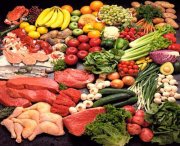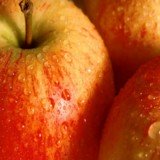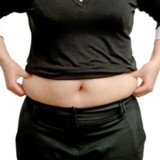Eating Healthy Guide
Eating Healthy Guide
 Eating healthy is one of the things that are at the top of a lot of people's to do list. This generation has become one of the most unhealthy generations ever, in terms of our eating habits and general lifestyles. Due to hectic schedules in and out of the office, individuals hardly have time to eat healthy home cooked meals, let alone cook them!
Eating healthy is one of the things that are at the top of a lot of people's to do list. This generation has become one of the most unhealthy generations ever, in terms of our eating habits and general lifestyles. Due to hectic schedules in and out of the office, individuals hardly have time to eat healthy home cooked meals, let alone cook them!
As compared to the generations past, our generation has also got to be the laziest! Harsh but true. Most of today's children spend half their time watching television or playing tv games. And our teens and young adults follow suit, especially if they are not in school. This is one of the reasons for the prevelance of childhood obesity, type 2 diabetes, hypertension and such like diseases associated with these.
But, there is good news! It's not all hopeless. As we mentioned earlier, people are now trying by all means possible to eat healthy. At least most people. However, eating healthy can be a challenging thing to do if you don't know where to start or if fast food is what your palette was used to. It may time some time adjusting to it, but it can be done. And as a side note, healthy eating is not dull and boring! With some creativity and little bit of passion you'll be surprised at just what you can come up with. The food pyramid diagram and My Plate are some of the main keys that you can use when you want to embark on this healthy eating lifestyle and stick to eat.
The food pyramid diagram discusses the 5 food groups and gives you a rough guide as to how much from each food group you are recommended to have. We will give a brief description of each food group.
- The Carbs group: this is your breads, pasta, rice, noodles and cereals group. Most of these are grain products. Try by all means to eat whole grain varieties where possible. This will be your whole grain bread, cereal, whole wheat pasta, brown rice, etc. Avoid, where you can, refined foods such as white rice, white bread, white flour, etc. Potatoes, though not a produce of grain, are also found in this food group. It is adviced that you eat about 6-11 servings from this group. This obviously depends on your activity levels as well as your sex and probably age also.
- The Vegetables group: The eating healthy guide recommends that you have at least 3-5 servings a day. This food group together with the fruits provide your body with a pack load of anitoxidants which will, amongst other things, boost your immune system and help fight against free radicals which are damaging to our bodies. Variety is important to consume.
- The fruits group: Again, in this food group, variety matters. That way you'll gain a lot of nutritional benefit from the different fruits and they all have different nutritional values. From the fruits food group you're recommended to eat 2-5 servings a day. An example of a serving is one medium banana. Fruits and vegetables are great to have as snacks in between your meals or as appetizers before your meal. Please note that usually the fruits and vegetables are seen as one food group, although one should make sure they have enough of the vegetables and the fruits.
- The meats, poultry, fish and eggs group: this is the protein supplying group. The foods found in this group also have other minerals, nutrients and vitamins that they supply but the major thing they supply is protein. You will also find other foods such as nuts, tofu and beans in this food group. The eating healthy guide recommends that one eats 2-3 servings a day from this group.
- The dairy group: As is apparent, this group majors in supplying your body with calcium and protein. Dairy products will also be found in this food group. Examples of things that you may find here include milk, yogurt, cheese and ice-cream. It is reommended to have 2-3 servings a day from this food group. However, a tip here for your eating healthy guide is to choose low-fat or fat-free products from this group. This could be your fat-free yogurt or even 1% milk.
- Finally, there is the sweets, oil and sugars category. This category cannot exactly be classified as a food group and there isn't a specific recommended amount of servings you are to have in a day. The eating healthy guide advices that foods in this category be eaten sparingly. A few examples of what you can find in this sweets, sugars and oils category include doughnuts, candy, chocolate, sugar drinks such as soda pops and all the sweet treats.
These are the food groups most of the food stuffs will be categorized into. The food pyramid diagram is one of the most convenient and easy to understand eating healthy guide ever!
Eating Healthy Guide For Kids
 The eating healthy guide for kids does not differ much from that of adults, except for the portions of course. However, the general rule of thumb is the same. That is, eating from all the five food groups, including a whole lot of variety from each food group. Seeing as children are still developing, it is of utmost importance that they eat healthy. This will allow their organs and bodies to develop and grow in a healthy manner.
From the carbs group, children should eat 113g -230g (4oz- 8oz) a day, all dependent on their activity levels. Remember to give them whole grain options where possible.
The eating healthy guide for kids does not differ much from that of adults, except for the portions of course. However, the general rule of thumb is the same. That is, eating from all the five food groups, including a whole lot of variety from each food group. Seeing as children are still developing, it is of utmost importance that they eat healthy. This will allow their organs and bodies to develop and grow in a healthy manner.
From the carbs group, children should eat 113g -230g (4oz- 8oz) a day, all dependent on their activity levels. Remember to give them whole grain options where possible.
From the fruits and vegetables group, it is recommended that children have one and a half to two and a half cups of fruits and vegetables. There usually is a hustle in trying to get the kids to eat vegetables. Try and get them involved from the get go. For instance, you could ask them to ome and join you in preparing the meal. It will generate interest, fun and curiosity of course in wanting to eat what they have prepared. From the meats, fish and poultry food group, the eating healthy guide for children advises that children have 85g- 142g (3oz- 5oz) per day. Protein is one of the essential nutrients needed for growing children. So it is important that they get their recommended daily allowances for healthy growth. A few examples of things from this food group that you can give your children include lean meat, chicken, eggs and peanut butter.
The dairy and dairy products food group is equally important. As we mentioned earlier, it's this food group that provides us with calcium, amongst other things. Calcium deficiency can bring about undesired effects. For instance your children will end up not developing strong bones and teeth. It is recommended that kids get 2-3 cups of dairy produce per day. This could be milk, yogurt, cheese or other dairy products. There is obviously the last category which children are interested in, perhaps more than all the other food groups. This will obviously depend on what they were introduced to growing up. This is the sweets, sugars and oils category. In this category, you will find most of the junk food. As we mentioned earlier, these should be consumed sparingly, time and again.Having said this, one can see why healthy eating for children should never be underestimated.
Eating Healthy Guide For Restaurants
 Eating a healthy meal out can be one of the most challenging things to do, when you are clueless about healthy eating. However, one of the main things that can guide you when you're planning on eating healthy in a restaurant is reading the nutrition facts of what you want to eat.
Eating a healthy meal out can be one of the most challenging things to do, when you are clueless about healthy eating. However, one of the main things that can guide you when you're planning on eating healthy in a restaurant is reading the nutrition facts of what you want to eat.
Nutrition facts help you to see what exactly you're putting into your body. Things to pay special attention to when you're reading the nutrition facts are the total fat, sodium, sugar, cholesterol and saturated fat content of the food.
If these are consumed in excess, over and beyond your recommended daily allowance they may lead to adverse health effects. Food portions in the restaurants or fast food outlets can be much more than at home. Therefore, another tip for your eating healthy guide when eating out would be to share your meal with someone or ask that it be put in a doggy bag and you can eat later. Learn more about eating out healthy by following the link.
Eating Healthy Guide New Nutrition
 The eating healthy guide new nutrition is not something that we have not know. The old adage, "What goes around, comes around" would definitely apply here. The older generation focused more on healthy foods, home cooked meals and the like. Then came a generation that was more into fast food and eating out. This was and still is mostly due to the busy lifestyles people now lead. However, this type of of lifestyle has led to many health problems.
The eating healthy guide new nutrition is not something that we have not know. The old adage, "What goes around, comes around" would definitely apply here. The older generation focused more on healthy foods, home cooked meals and the like. Then came a generation that was more into fast food and eating out. This was and still is mostly due to the busy lifestyles people now lead. However, this type of of lifestyle has led to many health problems.
It is now that the new nutrition has come up (though not so new). It is basically going back to the way our fathers used to eat. Growing their own fresh, organic produce. That is where most people are trying to get to today. Even fast food out benefits of the new nutrition are plenty and amazing. One of the obvious is longer and healthier life spans. In conclusion, the eating healthy guide when it comes to the new nutrition is to stick to organic food where possible and enjoy the benefits!!


